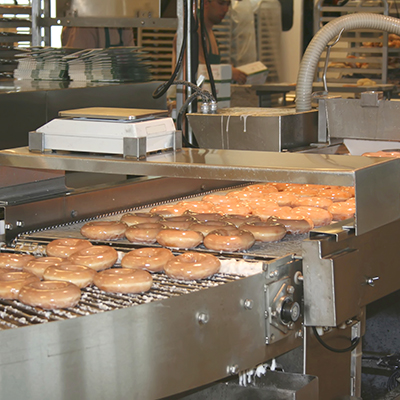In this article, we will focus on some of the most common errors concerning food-grade lubricants that are approved for use in the food industry.

Content:
1. Food-grade lubricants are of lower quality than their industrial counterparts!
2. There are not enough food-grade lubricants available for all lubricating applications!
3. Food-grade lubricants need not be used on all lubrication points in a food-processing production process!
4. All products used in Europe must be certified in Europe!
5. Food-grade lubricants are breeding grounds for microbial contamination!
Misconceptions 1: Food-grade lubricants are of lower quality than their industrial counterparts!
Some believe that food-grade lubricants cause shorter lubrication intervals or much shorter service life of machinery and equipment. Others think that they are not resistant to high or low temperatures and not compatible with plastics and elastomers.
None of that applies. All food-grade approved lubricating base oils and additives perform as well as their conventional industrial counterparts. Therefore food-grade lubricants can have the same positive effect on productivity and expenditure as their industrial counterparts.
Misconceptions 2: There are not enough food-grade lubricants available for all lubricating applications!
Another misconception about lubricants for food applications is that the existing product range is limited and therefore in some areas it is inevitable to resort to “conventional” lubricants. This error is based on the fact that some lubricant suppliers have also had a “small selection” of their products certified as food-grade lubricants.
A food-processing company should generally look for a partner that specializes in these products providing a broad portfolio. The widest possible product range of certified lubricants for food applications provides a broad coverage of all lubricant applications in a production process. The more products a manufacturer offers, the higher the probability that you will find the one that exactly meets your requirements.
As an expert for foodstuff lubricants Costenoble cooperates with JAX, the leading American manufacturer of food-grade lubricants. Costenoble’s extensive product portfolio ranges from lubricants, anti-friction coatings and compressor oils up to thread pastes and is complemented by selected high-performance products of the Krytox™ series by Chemours®. All products are suitable for use in the food-processing industry and are certified accordingly.
Misconceptions 3: Food-grade lubricants need not be used on all lubrication points in a food-processing production process!
A production process from manufacture over processing up to packaging includes countless different lubrication points. Some are in immediate contact with the food and others are further away from it.
It is a common erroneous assumption that more distant lubrication points need not be treated with a certified lubricant. This is not correct. According to European legislation food processing companies must create a HACCP plan which identifies all potential hazards regarding food safety and which indicates how risks can be detected and controlled. This also includes the contamination risk caused by the usage of inadequate lubricants. The best way to avoid such risks is to exclusively apply approved food-grade lubricants in the entire plant. Costenoble’s broad product range ensures that all possible lubrication points in a production process will be treated with adequate lubricants – without any restriction of product quality or performance.
Misconceptions 4: All products used in Europe must be certified in Europe!
There are several standards and competent authorities worldwide for the certification of products and the corresponding approval for use in the manufacture and processing of food. In Germany, the DIN standard ISO 21469 is frequently used. In the USA, which pioneered the standardization of releases for the food industry, the Food and Drug Administration (FDA) is the competent federal authority.
The FDA comprehensively controls the quality of food and drugs. Lubricants, however, are not included, as they are non-food products. Upon request, however, manufacturers can have their lubricants checked in accordance with FDA specifications, among others by the independent organization NSF International. The organization tests the lubricants according to 21 CFR §178.3570 regulations. After passing the test, the product receives NSF approval in the following classes:
- H1 for lubricants suitable for short and incidental food contact,
- H2 for lubricants which must not get in contact with food and
- 3H for such lubricants which may have direct contact with food. These are mostly mold release agents.
This proves that the lubricant is suitable for occasional food contact. The NSF approval is considered a proven standard worldwide and is accepted by German authorities.
Misconceptions 5: Food-grade lubricants are breeding grounds for microbial contamination!
For more than 60 years JAX has been a pioneer in the area of food-grade lubricants. JAX was the first company to launch food-grade lubricants on the market with the approval of the US Department of Agriculture in 1962. These lubricants are NSF approved, most of them having H1 status. Some even possess 3H approval which allows them to have direct food contact.
All of the NSF H1 certified JAX FG lubricants contain proprietary Micronox with anti-bacterial protection. JAX developed and patented Micronox. It protects lubricants against microbial contamination and decay.
With JAX’s food-grade lubricants, which have been proven for decades, the risk of contamination can effectively, sustainably and safely be avoided.
